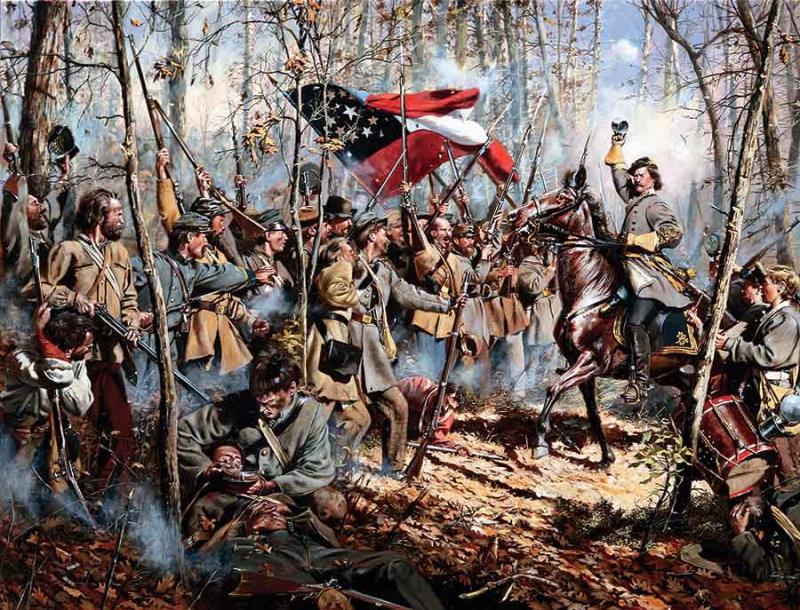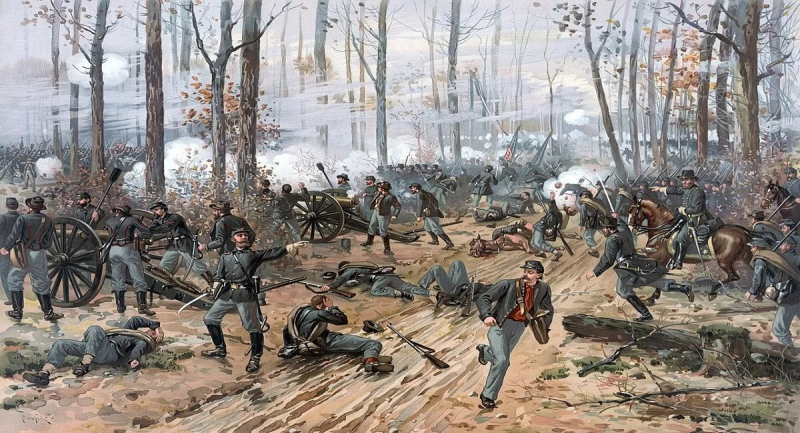Bragg’s forces were severely weakened by sending troops to Knoxville.
Braxton Bragg commanded the Confederate Army of Tennessee at the battle of Chickamauga and the battles for Chattanooga. He was a graduate of West Point (Class of 1837), a Seminole War veteran, a distinguished veteran during the Mexican-American War, and a long-standing United States Army officer. On November 3, General Bragg announced that he would send General James Longstreet and his two divisions to Knoxville, Tennessee to inspect the activities of Union forces under General Ambrose Burnside. This movement seriously weakened the encirclement line of the Confederates. The Bragg’s forces further weakened his line on 22 November by sending troops under General Simon Bolivar Buckner and General Patrick Cleburne - his best divisional commander - to support Longstreet. However, as Grant began to move, Bragg called Cleburne back to his line to help defend against the Confederate attack.
Although the Army of Tennessee had about 52,000 men at the end of July, the Confederate government merged the Department of East Tennessee, under Maj. Gene. Simon B. Buckner, into Bragg's Department of Tennessee, which added 17,800 men to Bragg's army, but also extended his command responsibilities northward to the Knoxville area. After the battle, Rosecrans's Army of the Cumberland retreated to Chattanooga, where Bragg’s forces laid siege to the city. He began to wage a battle against the subordinates he resented for failing him in the campaign—Hindman for his lack of action in McLemore's Cove, and Polk for delaying the morning attack Bragg ordered on September 20. Longstreet was dispatched with his corps to the Knoxville Campaign against Ambrose Burnside, seriously weakening Bragg's army at Chattanooga. This is one of the facts about the battle of Chattanooga.









